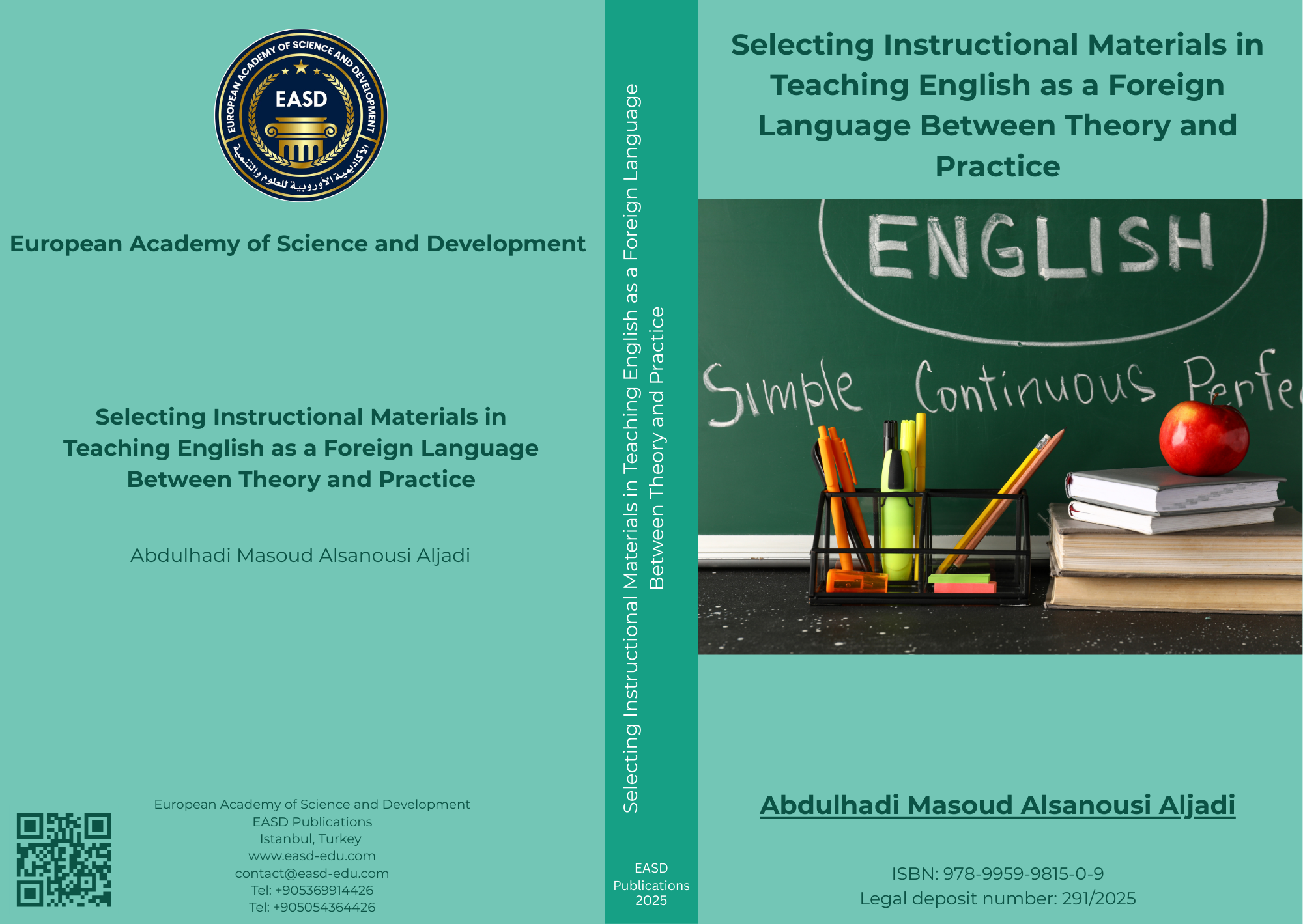Selecting Instructional Materials in Teaching English as a Foreign Language Between Theory and Practice

Title: Selecting Instructional Materials in Teaching English as a Foreign Language Between Theory and Practice
by Abdulhadi Masoud Alsanousi Aljadi
This book explores the critical role of instructional materials in teaching English as a Foreign Language (EFL), with a particular focus on reading comprehension. The author emphasizes that reading serves as a bridge to vocabulary acquisition, cultural understanding, and critical thinking, making the selection of appropriate materials essential for effective EFL instruction. The book is grounded in qualitative research involving EFL teachers from Libyan international schools, whose experiences highlight the challenges and strategies in material selection.
Key Themes:
- Theoretical Foundations: The book draws on theories such as Piaget’s Cognitive Theory, Schema Theory, and Krashen’s Input Hypothesis to explain how learners acquire language and comprehend texts. These theories underscore the importance of aligning materials with learners' cognitive levels, prior knowledge, and interests.
- Practical Challenges: Teachers face difficulties in selecting materials that cater to diverse learner needs, including proficiency levels, cultural backgrounds, and motivational factors. Limited resources, time constraints, and insufficient professional development further complicate this process.
- Types of Materials: The author discusses various instructional materials, including traditional texts, visual aids (e.g., pictures, videos), and internet-based resources. Each type has unique benefits, such as enhancing engagement or providing authentic language exposure.
- Guidelines for Selection: The book offers practical recommendations for selecting and adapting materials, emphasizing authenticity, relevance, and learner-centeredness. It also highlights the importance of integrating technology and fostering collaborative learning environments.
- Case Studies: Insights from Libyan EFL teachers reveal common practices, such as using culturally relevant texts and multimedia, as well as the need for more support in material development and professional training.
Conclusion:
The book advocates for a holistic approach to EFL education, urging educators, policymakers, and curriculum designers to prioritize high-quality, adaptable materials. By combining theoretical insights with practical examples, the author provides a comprehensive guide for improving EFL instruction and supporting learners in achieving language proficiency.Significance:
This work is a valuable resource for EFL teachers seeking to enhance their material selection process, as well as for researchers and policymakers aiming to address gaps in EFL education. It underscores the transformative potential of well-chosen instructional materials in fostering effective language learning.